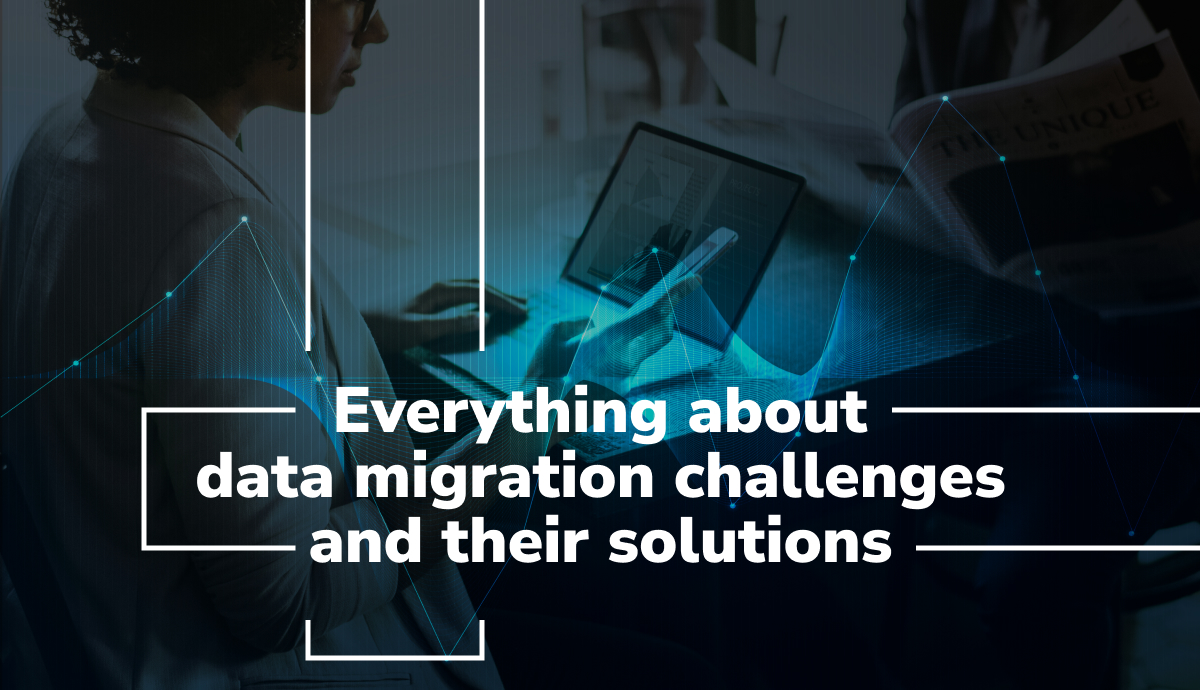Technical Standards and evolving technology are the need of the hour. They do need to be built and keep evolving with technology as the requirements in the business are often the main directions of the migration. These projects not only demand cost but are also resource-intensive, like labour-intensive, error-prone, time-consuming, but also the requirement behind it is to be meticulously planned, with appropriate tools, and to achieve success demands intensive testing.
Data migration (DM) is a process of transfer of data or information from one system to another, which involves the transfer from a legacy NFS source system into currently utilizable systems or a new system, known as the targeted system or the application software. For outstanding revenue generation, the IT budget for any major company is generated when there is a combined performance of the data migration process and utilization of the resources in a DM project.
WHY DATA MIGRATION IS PERFORMED
1. Acquisition and merger of a business unit/organization that triggers process change in the organization.2. To improve the efficiency, performance, and scalability of software applications.
3. To adopt new changes in terms of technology, Market practice, operational efficiency, regulatory requirement results in better customer service.
4. The major cost-reduction is done by bringing down the operational expenses and efficiency by streamlining and removing the grid-lock process in the application procedure or when various data centers were relocated to cluster in a single location.
DATA MIGRATION TYPES:
DATABASE MIGRATION- When the migration of information is performed from an existing database seller to another database seller or when an older, existing version is upgraded to a newer version. Ex: IBM DB2 to Oracle, or some standalone databases like Flyway and Liquibase.a. DATA CENTRE RELOCATION:
When there is a displacement from one location to another, a need for data migration from the legacy data center database to a targeted data center database is done.b. APPLICATION MIGRATION:
When an application is transferred, like the migration from an on-premise enterprise server to a cloud domain or from one cloud domain environment to another similar type, the data transfer of underlying information is also done to the new application.c. BUSINESS PROCEDURAL MIGRATION:
There can be various reasons due to which changes in the procedures of a business proposal are done, like maybe due to any merging, investment, acquisition, accession, or due to business reforming. The nature of the deal is checked, and then the data is necessarily moved to diverse storage types.RISK IN DM PROCESS AND ITS SOLUTION
RISK TO LOSE DATA:
There can be a type of data loss where the data present in the legacy system, if lost or unrecognized in the targeted location then it is generally termed as data loss. This is the highest potential risk involved in this process. The reputation, as well as financial breaches, are faced where the cost involved in verifying the data loss and business costs involved due to poor unavailable data.Solution: Reconcilement
There can be a two-way reconciliation pathway, involved which is either the: Count Reconcilement & Key financial column reconciliation.A proper comparison of the number of records in the legacy system and the target system will give a fair evaluation of the migrational data loss. The legacy and target system data won't match sometimes, but there are certain parameters in business rules which reject records based on the set parameters. Then the count of legacy system records is equal to the number of cancelled records plus the target system record count. Valid reasons should be put forward so as to cite the explanation for rejected records.
Key financial column reconciliation is the process of tracking the sum of all the columns which belong to key financial data or ex closing balance, tracking available balance, etc., and the comparison between legacy and target system, which shall result in data loss identification. If any mismatches are suspected, then they are corrected by digging all the old files, then it's at the granular level where all the mismatches and root cause behind the mistake is traced and analyzed to find the real reason behind such data losses.
DATA CORRUPTION AND INTEGRITY BREACH:
The content and the details according to a given format in legacy and target systems are compared. If the details obtained are different as compared to the migration process, then such data is termed " corrupted data." Due to data migration, mistakes, anomalies, irregularities, or abnormalities of various forms are observed in the data. Suppose the data is replaced with some useless or duplicate or presence of some senseless information, then it's a matter of data integrity affair with a variety of issues. Such type of corrupted data and data integrity affects the business and operation efficiency, and it totally beats the plan of data migration.Solution: Regular validation of data.
The best methodology to avoid the corruption of data is by validating the authenticity of each and every data between the legacy and target system. The best ways to maintain the data validation methodologies are which are widely used are as follows:1. Validating sample data.
2. Creating subsets of data validates
3. Overall validation of data set thoroughly
Let's study each of them briefly:
1. Validating sample data:
This type includes picking up any random and then comparing it with the legacy system's record, which is then followed by sampling and detection in the target system again. Sample profiling fetches higher data coverage than any randomized sample.2. Creating subsets of data validates:
Rather than choosing any random record samples, choosing a subset where the records are screened in an orderly manner where the first ten or hundred or thousand and higher records are sampled by choosing a specific target. More data coverage with more record selection is done to see a probable ratio.3. Overall validation of data set thoroughly:
An ideal validation of the data is this type of data validation where we strive in migration testing. Each and every record is compared in a two-way system where the data is analyzed in both systems twice by vice-versa technology. Minus/exception operators are used in such a bi-directional system. Two different databases make it impossible to compare. Thus, the comparison is made based on both data of legacy and track being common in a single data.Various aspects to consider during data validation:
1. Project stability.
2. Data coverage.
3. Execution time.
4. Efficiency of the targeted query/data script.
CONCLUSION:
Data migration is like a pattern followed in the IT sectors of present business scenarios. Even though it usually causes major disordering or wrong interpretation, the valuable results it provides on data quality or application performance problems deeply matters in the budget management of high business companies. To prevent these problems, organizations need a consistent and reliable policy that enables them to plan, design, migrate and validate the migration and make better decisions based on these real-time data preferences.


